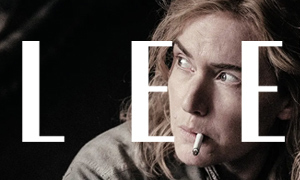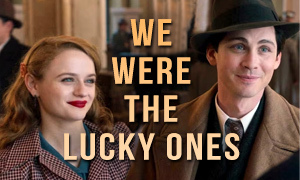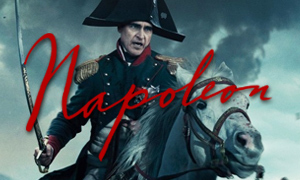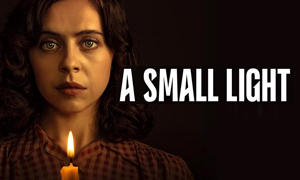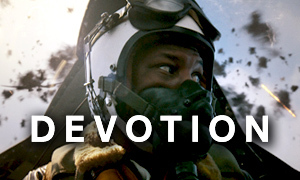Devotion vs. the Real Story of Pilots Jesse Brown and Tom Hudner
Jonathan Majors
Born: September 7, 1989
Birthplace:
Lompoc, California, USA
Jesse L. Brown
Born: October 13, 1926
Birthplace: Hattiesburg, Mississippi, USA
Death: December 4, 1950, Chosin Reservoir, North Korea (plane crash)
Glen Powell
Born: October 21, 1988
Birthplace:
Austin, Texas, USA
Tom Hudner
Born: August 31, 1924
Birthplace: Fall River, Massachusetts, USA
Death: November 13, 2017, Concord, Massachusetts, USA
Christina Jackson
Born: June 5, 1987
Birthplace:
Plainfield, New Jersey, USA
Daisy Brown
Born: April 26, 1927
Birthplace: Hattiesburg, Mississippi, USA
Death: July 6, 2014
Joe Jonas
Born: August 15, 1989
Birthplace:
Casa Grande, Arizona, USA
Marty Goode
Born: November 25, 1928
Birthplace: Trenton, New Jersey, USA
Death: February 14, 2016, Norfolk, Virginia, USA
Daren Kagasoff
Born: September 16, 1987
Birthplace:
Encino, California, USA
Bill Koenig
Born: May 24, 1926
Birthplace: Des Moines, Iowa, USA
Death: February 25, 2015, Virginia Beach City, Virginia, USA
Nick Hargrove
Born: September 3, 1992
Birthplace:
Philadelphia, Pennsylvania, USA
Carol Mohring
Born: December 19, 1923
Birthplace: Reading, Pennsylvania, USA
Death: May 22, 1950, Mediterranean Sea off Coast of Sicily (plane crash into sea)
Thomas Sadoski
Born: July 1, 1976
Birthplace:
Bethany, Connecticut, USA
Dick Cevoli
Born: October 24, 1919
Birthplace: East Greenwich, Rhode Island, USA
Death: January 18, 1955, USA (plane crash)
Was Jesse L. Brown the son of a sharecropper?
Yes. Born in Hattiesburg, Mississippi on October 13, 1926, the Devotion true story confirms that Jesse Brown was the son of a sharecropper and worked in corn and cotton fields in his spare time during his youth. He attended an air show with his father when he was six years old, which sparked an interest in flying. When planes would pass over the fields as he worked, he would declare that one day he would be a pilot. His family would simply respond with a considerate laugh at what they thought was a joke.
In high school, Jesse Brown excelled mentally at math and physically at sports, including football, basketball, and track and field. He performed especially well as a runner and long jumper. After graduating in 1944, Brown attended Ohio State, a predominately white college. He studied architectural engineering and was determined not to let obstacles like racism limit his opportunities. He was the only black student in the school's College of Engineering. To pay for his education, he worked the night shift (3:30 p.m. to midnight) loading boxcars for the Pennsylvania Railroad. He also worked part-time as a janitor at a Lazarus department store. In spite of his two jobs, he still performed very well in his classes, maintaining stellar grades.
When did Jesse Brown enter Navy flight school?
A Devotion fact-check reveals that during his sophomore year in college at Ohio State, Brown saw a poster for the Navy's V-5 Aviation Cadet Training Program. He hurried to the recruiting office and asked if he could enter the program. Lt. Dawkins, the recruiting officer, seemed surprised by the request and told Brown that he wouldn't be able to pass the written part of the exam. Dawkins then added that even if he passed, he would never pilot a Navy plane since there had never been a black aviator in the Navy. Brown told him that he planned to be the first. Seeing that he would not be easily deterred, Dawkins allowed him to take the exam, which was comprised of several written tests. Brown passed them all with high marks and aced the physical. He was accepted into the Navy flight training program.
On July 8, 1946, he enlisted in the United States Naval Reserve. He entered the aviation program and was given the rank of Seaman Apprentice. He was also a member of the college's NROTC program, which would train him to become an officer. He received a $50 monthly stipend from the Navy, which enabled him to quit both of his jobs and concentrate on school. Jesse Brown graduated from Ohio State with an architectural engineering degree in 1947.
Did Jesse Brown get married in secret before he graduated from Navy flight school?
While answering the question, "How accurate is Devotion?" we learned that on October 4, 1947, Jesse Brown married his long-time girlfriend, Daisy Pearl Nix, during a weekend trip home (the two had met in high school). Brown had just begun flight training at Naval Air Station Pensacola in Florida. Navy regulations prohibited aviation cadets from getting married while they were in the training program. Doing so could result in the cadet being kicked out of the program. Fortunately, no one found out.
Brown didn't reveal that he was married until after he became a commissioned officer in April 1949. He and his wife Daisy had a daughter, Pamela Elise Brown, who was born in December 1949. The secret marriage is not depicted in the film.
Was Jesse Brown the U.S. Navy's first black aviator?
Yes. Black pilot Jesse Leroy Brown was very much the Jackie Robinson of the skies. He endured bigotry to become the nation's first aviator of color to make it through the United States Navy's flight training program, with his final test being to land on an aircraft carrier. He made five landings (or "traps") flawlessly. On October 21, 1948, eight days after his 22 birthday, he was designated a naval aviator. He was the first black American to wear the golden wings of a Naval Aviator Badge. According to his granddaughter, Jessica Knight Henry, it's true that Jesse's Navy commander in Pensacola refused to pin on his wings after he successfully completed his training (Essence). Jesse would also become the first black aviator to fly in combat.
The Navy, along with the other branches of the U.S. military, had been officially desegregated in 1948 when President Harry S. Truman issued Executive Order 9981. Yet, of the approximately 17,000 blacks in the Navy in 1949, 10,000 were still in racially segregated assignments and only 19 were officers. It is true that the Navy led the way when it came to integrating the military, with the other branches being slower and more reluctant to do so. It's well known that the Tuskegee Airmen broke the color barrier during World War II when it came to aviators in the Army. However, they were a group of primarily black pilots and airmen who were not part of an integrated Army. The Navy steadily increased integration in certain training programs and also increased the number of black sailors aboard its ships. A special NROTC program allowed for a rise in the number of black officers.
As seen in the Devotion movie, the true story corroborates that the integration process sped up with the need for manpower after the start of the Korean War in June 1950, especially when military generals realized that integrated companies fought just as well or better than the rest of the men on the front lines. Since attitudes in the military to a large degree still mirrored the general public, the effort to integrate was further motivated by the Supreme Court's 1954 Brown v. Board of Education ruling that integrated the country's schools and the 1964 Civil Rights Act that banned segregation in other areas of American society. -Navy Times
When did the Devotion true story take place?
The portion of Jesse Brown's life story that is the main focus of the film unfolded in 1950 during the Korean War.
Is the Devotion movie based on the book?
Yes. The movie is based on the 2014 book Devotion: An Epic Story of Heroism, Friendship, and Sacrifice by Adam Makos.
Did Jesse Brown hurl racial insults at himself in the mirror so that he could withstand them better in his daily life?
Yes. Like in the Jesse Brown movie, it's true that he endured a lot of racism, both growing up and in the military, mainly when he was in training. In the film, we see an adult Jesse hurling racial slurs at himself in the mirror in order to withstand even the cruelest insults without flinching. As pointed out in Adam Makos' book, this is indeed something the real Jesse Brown did regularly for years. However, the book talks about him standing in front of his family's only mirror at home as a boy. It's unclear if he continued the practice when he was in the Navy.
Did white pilot Tom Hudner defend his wingman, Jesse Brown?
Yes. It's true that Jesse Brown's wingman, Lt. Tom Hudner, bonded with him and had his back. Hudner had come from a wealthy Massachusetts family that owned a grocery store chain, and he'd attended a prestigious prep school. Despite having a very opposite upbringing as Brown, Hudner admired his professionalism, his sense of humor, and the way he'd stood up to racism during their training at Glenview Naval Air Station in Illinois. Hudner is portrayed in the movie by Glen Powell, who previously starred in Hidden Figures and Top Gun: Maverick.
Did Tom Hudner throw the first punch when bigoted soldiers tried to provoke Jesse Brown?
Adam Makos' book does not mention this incident happening in real life. The closest thing that's mentioned in the book is when a waiter at a hotel refuses to take Jesse's drink order, which prompts Tom to stand up and tell the group, "Let's get the hell out of here."
Did pilot Jesse Brown and Tom Hudner encounter Elizabeth Taylor while they were in port on the French Riviera?
In the movie, the boys are at their first port of call in Nice, France, on the Riviera, where Jesse Brown (Jonathan Majors) meets Elizabeth Taylor (Serinda Sawan), who invites them to a casino. Brown encounters racism when he is confronted by a group of Marines. Tom Hudner (Glenn Powell) attempts to defend his fellow aviator and friend.
In real life, Jesse Brown and Tom Hudner did meet Elizabeth Taylor, who was in Cannes for the film festival. However, it was a group of Marines who encountered her on the beach sunbathing. Brown didn't encounter her until later that day at the Carlton Hotel where she was having lunch with friends at the hotel's terrace café. Hudner met her four days later when she visited the Leyte. He was with her again that night at the casino as he played roulette. In Adam Makos' book, there is no mention of Brown encountering racism at the casino, or even being present there. Elizabeth Taylor visited the Leyte several more times while it was in port off the coast of Cannes.
Did Jesse Brown have trouble adjusting to the Navy's Vought F4U-4 Corsair plane?
Yes. Introduced by the U.S. Navy in 1950, the Vought F4U-4 Corsair's bulky engine blocked visibility and made it more difficult to fly than other fighter planes. It also made landing aboard an aircraft carrier even more nerve-wracking. Like other pilots, it's true that it took Jesse Brown time to adjust to the plane.
Did Navy pilot Jesse Brown and his wife Daisy have a child?
Yes. As stated earlier, Jesse and Daisy Brown had a daughter, Pamela Elise Brown, who was born in December 1949.
Did Jesse Brown invite Tom Hudner over for dinner?
No. It was actually fellow pilot and friend Carol Mohring who visited Jesse Brown's home many times. Mohring and Brown also carpooled to work together. In real life, the first time that Tom Hudner officially met Jesse Brown's wife, Daisy, wasn't until after Jesse's death when Daisy attended Tom's Medal of Honor ceremony at the White House. Adam Makos' book mentions that prior to the ceremony, Tom Hudner had only observed Daisy from a distance when she and Jesse were saying their goodbyes before the sailors boarded the USS Leyte. -CNN
How many combat missions did Jesse Brown fly during the Korean War?
The Devotion true story reveals that Brown had flown 20 combat missions prior to being dispatched to the Chosin Reservoir. The missions he had taken part in included assaults on troop concentrations, military installations, and communication lines around Songjim, Chongpu, Senanju, and Wonsan. We found no evidence in the book that Brown disobeyed an order from Tom Hudner and successfully blew up a bridge during one of the missions. That moment seems to have been created to set up the fictional scene that follows where Tom Hudner cites Brown's insubordination in the after-action report, which Brown then points out will be far more damaging to his career than if he were a white pilot.
After his squadron was sent to assist in the Battle of Chosin Reservoir, Jesse Brown and other pilots flew dozens of daily air support missions to prevent roughly 15,000 U.S. troops from being overrun by the much larger 100,000-strong Chinese army that had surrounded them.
Was Jesse Brown shot down by a Chinese anti-aircraft gunner?
On December 4, 1950, Jesse Brown and five other pilots, including wingman Tom Hudner, took off in their Vought F4U-4 Corsairs from the fleet carrier USS Leyte. Their mission was to support embattled U.S. troops and prevent them from being overrun by Chinese soldiers in the Battle of Chosin Reservoir in North Korea. The People's Republic of China had entered the conflict a little over a month prior. The men flew 35 to 40 minutes through severe wintry conditions. It was intended to be a three-hour search and destroy mission as well as an opportunity to gauge Chinese troop strength near the villages of Yudam-ni and Hagaru-ri.
The Devotion fact-check confirms that it is believed that a Chinese anti-aircraft gunner hiding in the snow below got lucky and hit Brown's Corsair when it was flying low. It was common practice for Chinese infantry to hide and ambush enemy aircraft passing overhead by unleashing small arms fire in unison. Lt. (j.g.) Bill Koenig, portrayed by Daren Kagasoff in the movie, radioed that it looked like Brown was trailing fuel.
"I think I may have been hit," Brown stated over the radio. "I've lost my oil pressure." He dropped his external fuel tanks and rockets and navigated his damaged Corsair down toward a clearing on the side of a mountain 15 miles behind enemy lines. With stalled forward speed, he pancaked into a bowl-shaped valley and the aircraft broke up violently upon impact. The plane's fuselage buckled at the cockpit, causing the instrument panel to smash into his right leg, trapping it beneath the fuselage.
In the 15 °F (−9 °C) mountain air, Brown removed his gloves and helmet as he tried to free himself, but he was unsuccessful. He waved to the other pilots circling close overhead, who had at first assumed he'd perished in the crash. Brown's badly damaged Corsair was smoking and a fire had begun near the internal fuel tanks.
Did Tom Hudner risk his life to save Jesse Brown?
Yes. As in the Devotion movie, Brown's friend and wingman, Lt. Tom Hudner, witnessed him guide his crippled Vought F4U-4 Corsair fighter plane down onto the side of a mountain. Hudner knew something was wrong when he didn't see Brown climb out of the cockpit. In answering the question, "Is Devotion accurate?" we confirmed that in a courageous and desperate attempt to save his friend, Hudner belly-landed his own plane roughly 100 yards from Brown's downed Corsair. It was a feat that could have gotten Hudner court-martialed.
In the frigid mountain air, Hudner made it to Brown's plane. He heroically tried to pull Brown from the cockpit and used snow to try to put out the fire. He quickly realized it was impossible to free Brown due to the instrument panel that had smashed into Brown's right leg during the crash and was now compressed against it. It's true that Jesse Brown remained calm while he was trapped and dying. He eventually began to fade from blood loss and the cold. Before losing consciousness, he spoke his final words to Hudner, "Just tell Daisy how much I love her."
"I will," replied Hudner, who observed Brown's head slump onto his chest and his breathing grow shallow. When the rescue helicopter arrived to extract them, Hudner left Brown for a moment to wave in the helicopter, which is when the life faded completely from Brown's body. Hudner and the pilot, Lt. Charles Ward (a friend of Brown's) tried to free Brown from the cockpit using an axe, but they were unsuccessful. Ward told Hudner that they had to go, that he didn't have instruments to fly in the dark. Hudner desperately wanted to stay at his friend's side, but Ward reminded him that he'd freeze to death. Brown didn't appear to be alive anymore. In despair, Hudner ran to the chopper.
When Hudner returned to the carrier USS Leyte (pictured below), the men on board were shocked by the news of Jesse Brown's death. Instead of facing a court martial for intentionally downing his plane to try and save Brown, Hudner would become the recipient of the first Navy Medal of Honor of the Korean War. -Navy Times
Was Jesse Brown given a "warrior's funeral"?
Yes. Tom Hudner pleaded with his superiors to be allowed to go back to the wreck to help extract Jesse Brown's body. The skipper of the fleet carrier USS Leyte, Capt. Thomas U. Sisson, discussed sending a group of men to retrieve Brown, but those who were part of the conversation all agreed that it was far too risky given the close proximity of enemy forces. Capt. Sisson then made the decision to give Brown a "warrior's funeral."
Two days later, seven fighter planes took off from the carrier, all loaded with napalm. They flew to the crash site where they observed that Brown's body was still stuck in the plane but his clothes were gone. They made a large circle and then engulfed Jesse Brown's body and plane in a shroud of flames, reportedly reciting the Lord's Prayer over the radio as they watched the glowing funeral pyre. In one last salute, they rocked their wings before hurrying away.
Brown, who was the first black naval officer killed in the Korean War, was posthumously awarded a Distinguished Flying Cross. Jesse Brown's wife, Daisy Brown, and their daughter, Pamela, were on hand at the White House to receive the medal from President Harry Truman. In 1972, the destroyer escort/frigate Jesse L. Brown was launched by the Navy in honor of the fallen pilot. -Navy Times
Does Devotion feature real planes and real flying?
Yes. Following in the footsteps of Top Gun: Maverick, director J.D. Dillard and the filmmakers wanted the flight scenes in Devotion to be as real as possible. "Part of what made production on this movie so complex is that we sourced nearly a dozen period aircraft," says Dillard. "I don't think there are more than a dozen Corsairs still flying in the world, and I think at our busiest time we had five of them." Today, a Corsair is worth four-and-a-half million dollars. The Corsairs used for the film were painted to look like the Fighting 32s of the VF-32 Squadron.
"The goal was to shoot real airplanes in as many real airplanes as we can," says Michael Fitzmaurice, the aerial director of photography, "and when we can't shoot all the airplanes real, make sure all the ones that are being in front frame, those are real airplanes, doing what real airplanes would do." The actors were put in a two-seat aircraft and filmed in the backseat while in the air. Director Dillard pointed out that the Cinejet camera plane was able to fly extremely close to the Corsairs since the Cinejet pilot didn't have to worry about things like jet blast with the older fighter planes.
The Sikorsky HO3S Helicopter that was used in the filming of the movie is the oldest flying helicopter in the world and the only HO3S in flyable condition. The HO3S was the first helicopter to be widely used by the Navy.
A mini-training program was put together for the actors. Glen Powell was already a licensed pilot at the time of filming and the only actor with flying experience (Tom Cruise had paid for Powell's flight school as a Christmas present after they starred in Top Gun: Maverick together). -The Aviation of a Forgotten War
